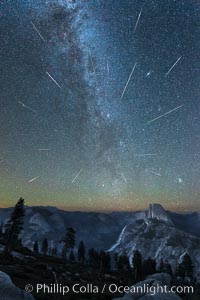
Perseid Meteor Shower and Milky Way, Andromeda Galaxy and the Pleides Cluster, over Half Dome and Yosemite National Park.
Location: Glacier Point, Yosemite National Park, California
Image ID: 28746
Location: Glacier Point, Yosemite National Park, California
Image ID: 28746
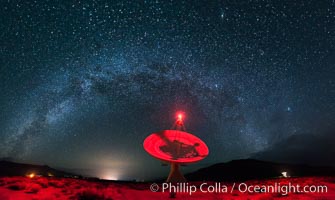
The OVRO 40 meter Telescope, part of the Owens Valley Radio Observatory located near Big Pine, California, USA. The telescope is used to conduct interferometric observations along with the other telescopes in the observatory, as a Very Long Baseline Interferometry (VLBI) station and as a single dish instrument. Its main focus today is on the monitoring of blazars.
Location: Big Pine, California
Image ID: 28796
Panorama dimensions: 7153 x 11978
Location: Big Pine, California
Image ID: 28796
Panorama dimensions: 7153 x 11978

Blue Moon, Full Moon at Sunset over San Diego City Skyline, approaching jet with headlights appearing in front of the moon.
Location: San Diego, California
Image ID: 28753
Location: San Diego, California
Image ID: 28753

Guadalupe Island at sunrise, panorama. Volcanic coastline south of Pilot Rock and Spanish Cove, near El Faro lighthouse.
Location: Guadalupe Island (Isla Guadalupe), Baja California, Mexico
Image ID: 28758
Panorama dimensions: 4224 x 25926
Location: Guadalupe Island (Isla Guadalupe), Baja California, Mexico
Image ID: 28758
Panorama dimensions: 4224 x 25926
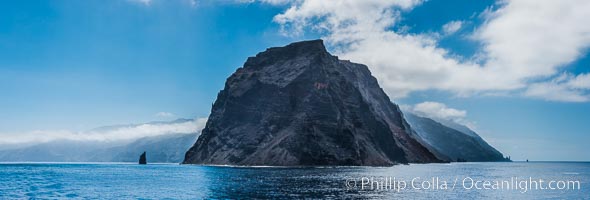
Punta Norte, the northern point of Guadalupe Island, viewed from the north. Punta Desfiladero (Blunt Point) and Roca Elefante are just visible at far right, and Roca Piloto (Pilot Rock) is see to the left of the island against the distant sweep of the cliffs that comprise the northeastern bight of the island, actually the rim of an enormous caldera.
Location: Guadalupe Island (Isla Guadalupe), Baja California, Mexico
Image ID: 28760
Panorama dimensions: 4595 x 13560
Location: Guadalupe Island (Isla Guadalupe), Baja California, Mexico
Image ID: 28760
Panorama dimensions: 4595 x 13560
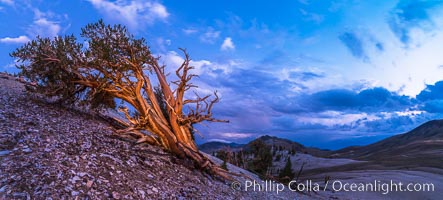
Ancient Bristlecone Pine Tree at sunset, panorama, with storm clouds passing over the White Mountains. The eastern Sierra Nevada is just visible in the distance.
Species: Ancient bristlecone pine, Pinus longaeva
Location: Ancient Bristlecone Pine Forest, White Mountains, Inyo National Forest, California
Image ID: 28781
Panorama dimensions: 4549 x 10085
Species: Ancient bristlecone pine, Pinus longaeva
Location: Ancient Bristlecone Pine Forest, White Mountains, Inyo National Forest, California
Image ID: 28781
Panorama dimensions: 4549 x 10085
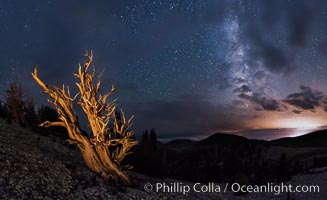
Ancient Bristlecone Pine Tree at night, stars and the Milky Way galaxy visible in the evening sky, near Patriarch Grove.
Species: Ancient bristlecone pine, Pinus longaeva
Location: Ancient Bristlecone Pine Forest, White Mountains, Inyo National Forest, California
Image ID: 28782
Panorama dimensions: 5237 x 8556
Species: Ancient bristlecone pine, Pinus longaeva
Location: Ancient Bristlecone Pine Forest, White Mountains, Inyo National Forest, California
Image ID: 28782
Panorama dimensions: 5237 x 8556
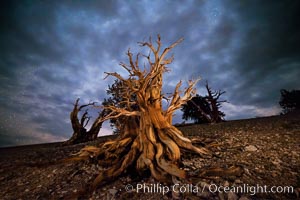
Ancient Bristlecone Pine Tree at night, stars and the Milky Way galaxy visible in the evening sky, near Patriarch Grove.
Species: Ancient bristlecone pine, Pinus longaeva
Location: Ancient Bristlecone Pine Forest, White Mountains, Inyo National Forest, California
Image ID: 28786
Species: Ancient bristlecone pine, Pinus longaeva
Location: Ancient Bristlecone Pine Forest, White Mountains, Inyo National Forest, California
Image ID: 28786
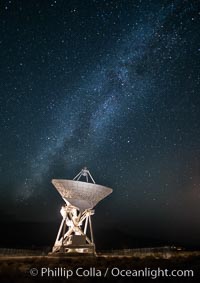
Radio telescope antenna, part of the Very Long Baseline Array (VLBA). The Very Long Baseline Array (VLBA) is a system of ten radio telescopes which are operated remotely from their Array Operations Center located in Socorro, New Mexico, as a part of the National Radio Astronomy Observatory (NRAO). These ten radio antennas work together as an array that forms the longest system in the world that uses very long baseline interferometry.
Location: Big Pine, California
Image ID: 28787
Location: Big Pine, California
Image ID: 28787
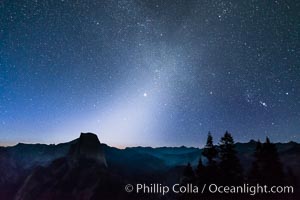
Zodiacal Light and planet Jupiter in the northeastern horizon, above Half Dome and the Yosemite high country.
Location: Glacier Point, Yosemite National Park, California
Image ID: 28745
Location: Glacier Point, Yosemite National Park, California
Image ID: 28745

Moon and Milky Way over Palomar Mountain State Park.
Location: Palomar Mountain State Park, California
Image ID: 28748
Panorama dimensions: 4486 x 14422
Location: Palomar Mountain State Park, California
Image ID: 28748
Panorama dimensions: 4486 x 14422
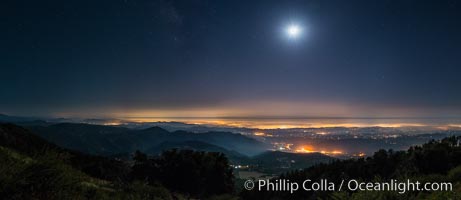
Moon and Stars over Pauma Valley, viewed from Palomar Mountain State Park.
Location: Palomar Mountain State Park, California
Image ID: 28751
Panorama dimensions: 6487 x 14971
Location: Palomar Mountain State Park, California
Image ID: 28751
Panorama dimensions: 6487 x 14971
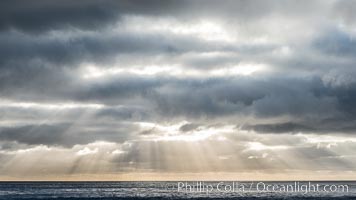
God Beams at Sunset, Guadalupe Island.
Location: Guadalupe Island (Isla Guadalupe), Baja California, Mexico
Image ID: 28772
Location: Guadalupe Island (Isla Guadalupe), Baja California, Mexico
Image ID: 28772

Sunrise clouds and light, panorama, viewed from Guadalupe Island over the Pacific Ocean.
Location: Guadalupe Island (Isla Guadalupe), Baja California, Mexico
Image ID: 28759
Panorama dimensions: 4301 x 14369
Location: Guadalupe Island (Isla Guadalupe), Baja California, Mexico
Image ID: 28759
Panorama dimensions: 4301 x 14369
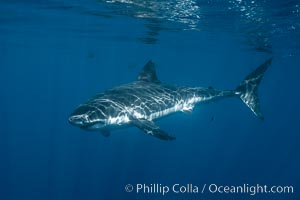
Great white shark, research identification photograph. A great white shark is countershaded, with a dark gray dorsal color and light gray to white underside, making it more difficult for the shark's prey to see it as approaches from above or below in the water column. The particular undulations of the countershading line along its side, where gray meets white, is unique to each shark and helps researchers to identify individual sharks in capture-recapture studies. Guadalupe Island is host to a relatively large population of great white sharks who, through a history of video and photographs showing their countershading lines, are the subject of an ongoing study of shark behaviour, migration and population size.
Species: Great white shark, Carcharodon carcharias
Location: Guadalupe Island (Isla Guadalupe), Baja California, Mexico
Image ID: 28768
Species: Great white shark, Carcharodon carcharias
Location: Guadalupe Island (Isla Guadalupe), Baja California, Mexico
Image ID: 28768
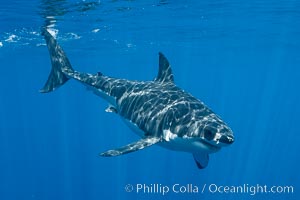
Great white shark, research identification photograph. A great white shark is countershaded, with a dark gray dorsal color and light gray to white underside, making it more difficult for the shark's prey to see it as approaches from above or below in the water column. The particular undulations of the countershading line along its side, where gray meets white, is unique to each shark and helps researchers to identify individual sharks in capture-recapture studies. Guadalupe Island is host to a relatively large population of great white sharks who, through a history of video and photographs showing their countershading lines, are the subject of an ongoing study of shark behaviour, migration and population size.
Species: Great white shark, Carcharodon carcharias
Location: Guadalupe Island (Isla Guadalupe), Baja California, Mexico
Image ID: 28765
Species: Great white shark, Carcharodon carcharias
Location: Guadalupe Island (Isla Guadalupe), Baja California, Mexico
Image ID: 28765